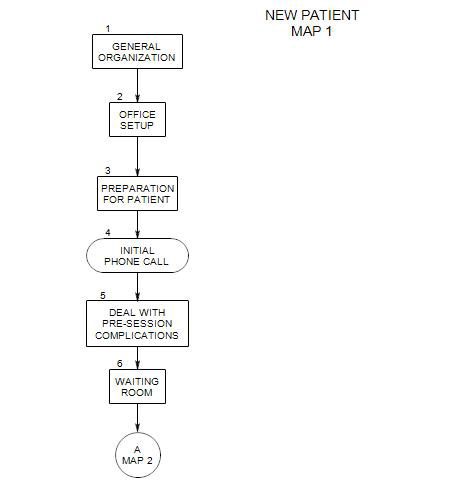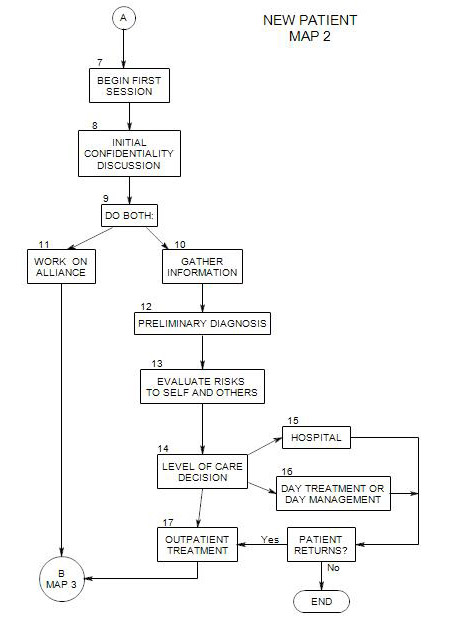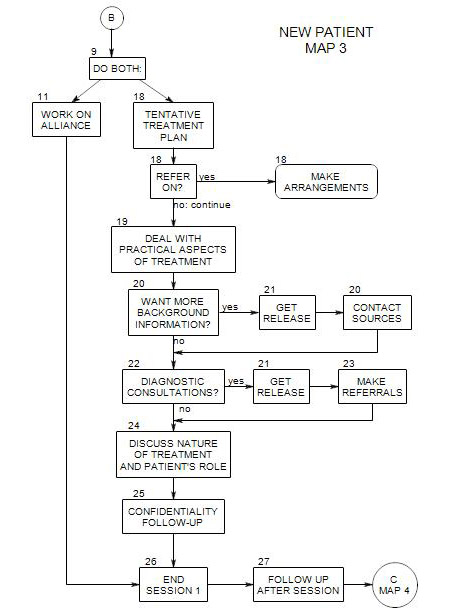8. INITIAL CONFIDENTIALITY DISCUSSION
It is important at the outset to set the frame for treatment. A major aspect of treatment is the idea that what is said will not be revealed to others. This has the potential for allowing the patient to be more open, and thus to examine issues that might otherwise remain hidden.
You can be brief at this time. Let him/her know that
- no one can overhear what is said in the treatment room.
- what is said belongs to him/her.
- you may not reveal anything about him/her to others without permission.
- no one else has access to your records.
You should also mention the usual limits to confidentiality
- Basic information about session dates and times may have to be passed on to his/her insurance company in order for payment to be made.
- You must let others know if he/she is planning to harm them.
- You must try to prevent him/her from harming him/herself.
However, unless your patient wants to know more about these issues, they are probably best left at that for now, so you can move on to the issues that brought him/her to your office.
You may need to come back to this discussion. See Section 25 on Map 3 for a follow-up.



